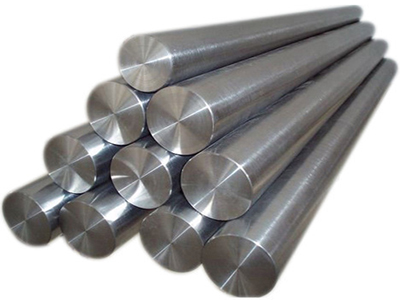The Global Stainless Steel Round Bar Market Research Report - Industry Analysis, Size, Share, Growth, Trends and Forecast Till 2026 gives an evaluation of the market developments based on historical studies and comprehensive research respectively.
The market segments are also provided with an in-depth outlook of the competitive landscape and a listing of the profiled key players.The comprehensive value chain analysis of the market will assist in attaining better product differentiation, along with detailed understanding of the core competency of each activity involved.
The market attractiveness analysis provided in the report aptly measures the potential value of the market providing business strategists with the latest growth opportunities.The report classifies the market into different segments based on type, heat treatment and application.
These segments are studied in detail incorporating the market estimates and forecasts at regional and country level.
The segment analysis is useful in understanding the growth areas and probable opportunities of the market.Final Report will cover the impact of COVID-19 on this industry.Browse the complete Global Stainless Steel Round Bar Market Research Report – Industry Analysis, Size, Share, Growth, Trends and Forecast Till 2026 @ https://www.decisiondatabases.com/ip/17235-stainless-steel-round-bar-market-reportThe report also covers the complete competitive landscape of the global Stainless Steel Round Bar market with company profiles of key players such as:Angan Steel Company LimitedArcelormittalBaosteel Group CorporationGerdau S.AJFE Holdings, Inc.Maanshan Iron & Steel Company LimitedNippon Steel LimitedPOSCOUnited State Steel CorporationA detailed description of each has been included, with information in terms of H.Q, future capacities, key mergers & acquisitions, financial overview, partnerships, collaborations, new product launches, new product developments and other latest industrial developments.SEGMENTATIONS IN THE REPORT:By Type:Hot RolledCold RolledBy Heat Treatment:HardeningTemperingAnnealingNormalizingStress RelievingQuenchingBy Applications:AutomobileHeavy EngineeringDefense and AerospaceOthers By Geography:North America (NA) – US, Canada & Rest of North AmericaEurope (EU) – UK, Germany, France & Rest of EuropeAsia Pacific (APAC) – China, Japan, India & Rest of APACLatin America (LA) – Brazil & Rest of Latin AmericaMiddle East & Africa (MEA) – Middle East and AfricaDownload Free Sample Report of Global Stainless Steel Round Bar Market @ https://www.decisiondatabases.com/contact/download-sample-17235The Global Stainless Steel Round Bar Market has been exhibited in detail in the following chapters –Chapter 1 Stainless Steel Round Bar Market PrefaceChapter 2 Executive SummaryChapter 3 Stainless Steel Round Bar Industry AnalysisChapter 4 Stainless Steel Round Bar Market Value Chain AnalysisChapter 5 Stainless Steel Round Bar Market Analysis By TypeChapter 6 Stainless Steel Round Bar Market Analysis By Heat TreatmentChapter 7 Stainless Steel Round Bar Market Analysis By ApplicationsChapter 8 Stainless Steel Round Bar Market Analysis By GeographyChapter 9 Competitive Landscape Of Stainless Steel Round Bar CompaniesChapter 10 Company Profiles Of Stainless Steel Round Bar IndustryPurchase the complete Global Stainless Steel Round Bar Market Research Report @ https://www.decisiondatabases.com/contact/buy-now-17235Other Reports by DecisionDatabases.com:Global Thermal Barrier Coatings (TBC) Market Research Report – Industry Analysis, Size, Share, Growth, Trends and Forecast Till 2026Global Steel Rebar Market Research Report – Industry Analysis, Size, Share, Growth, Trends and Forecast Till 2026Global Functional Additives And Barrier Coatings Market Research Report – Industry Analysis, Size, Share, Growth, Trends and Forecast Till 2026About-Us:DecisionDatabases.com is a global business research reports provider, enriching decision makers and strategists with qualitative statistics.
DecisionDatabases.com is proficient in providing syndicated research report, customized research reports, company profiles and industry databases across multiple domains.Our expert research analysts have been trained to map client’s research requirements to the correct research resource leading to a distinctive edge over its competitors.




























